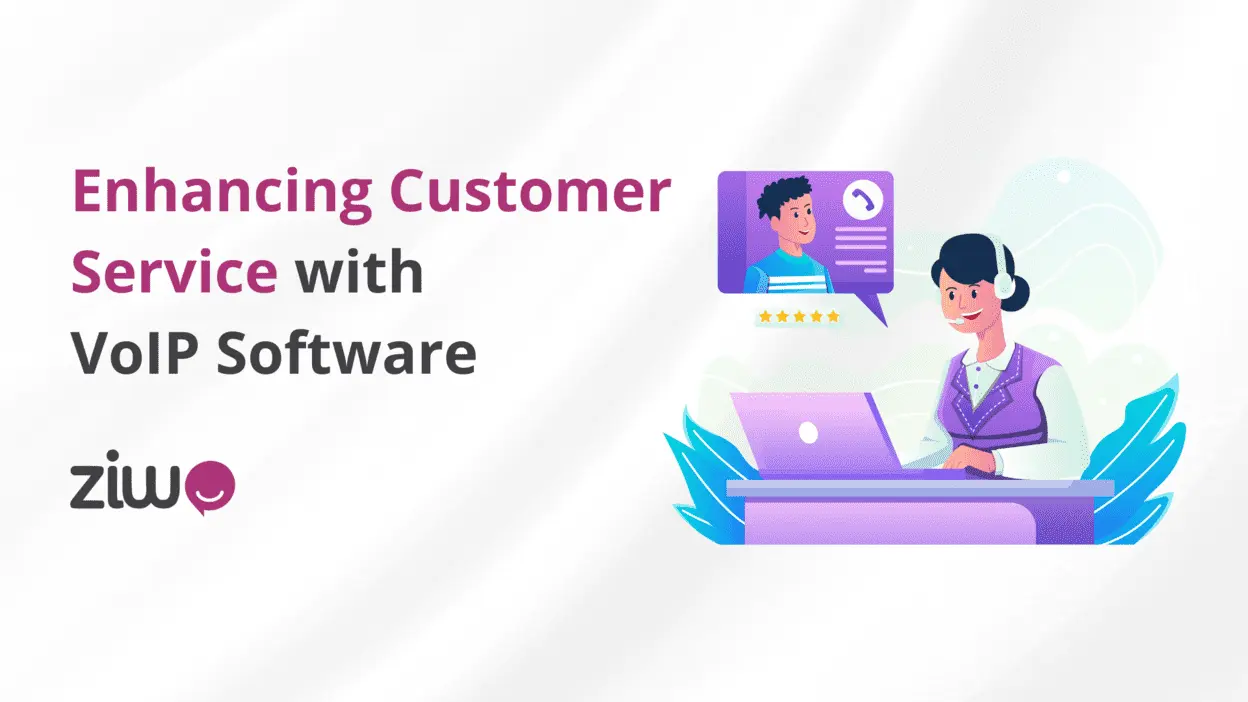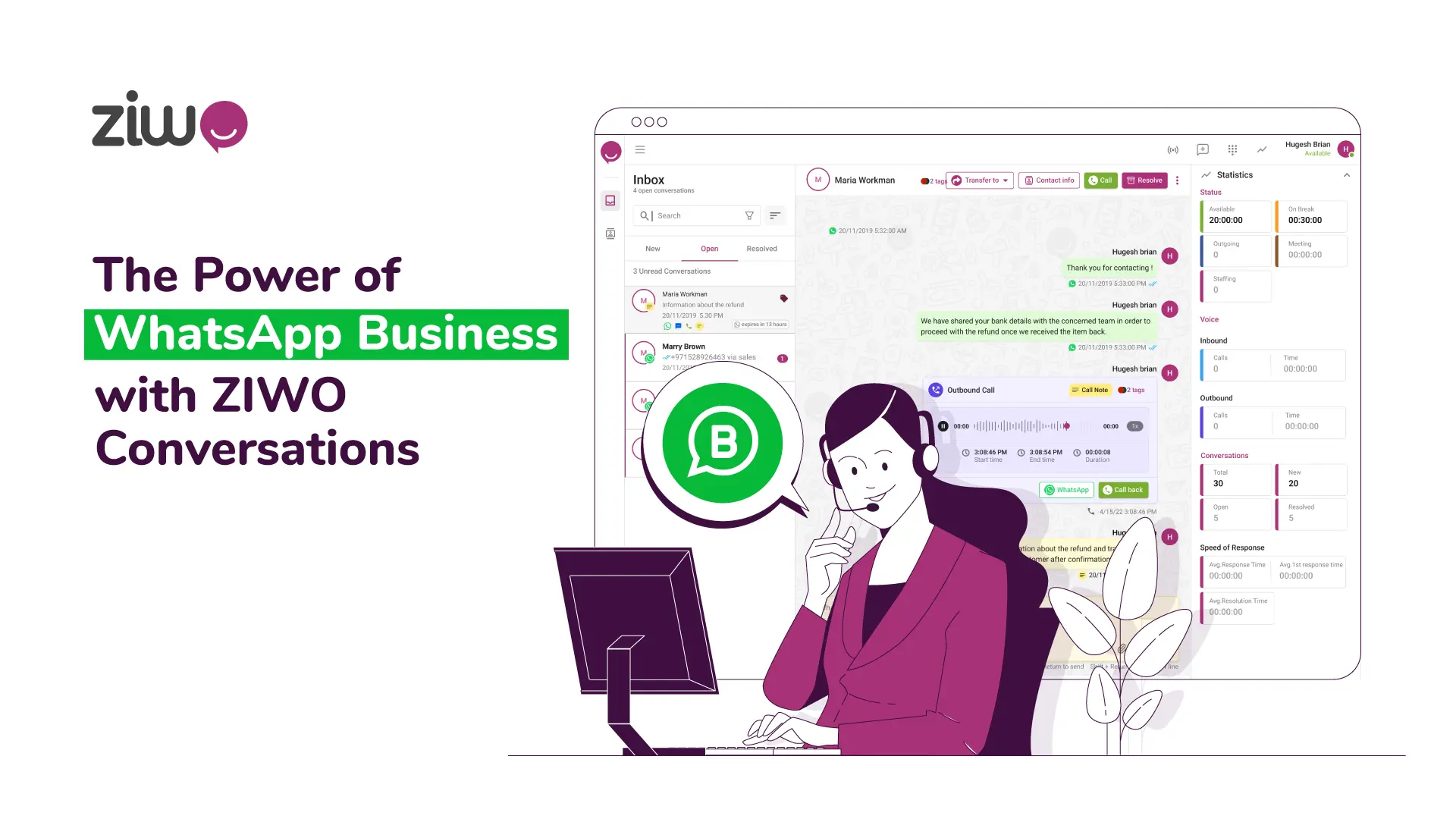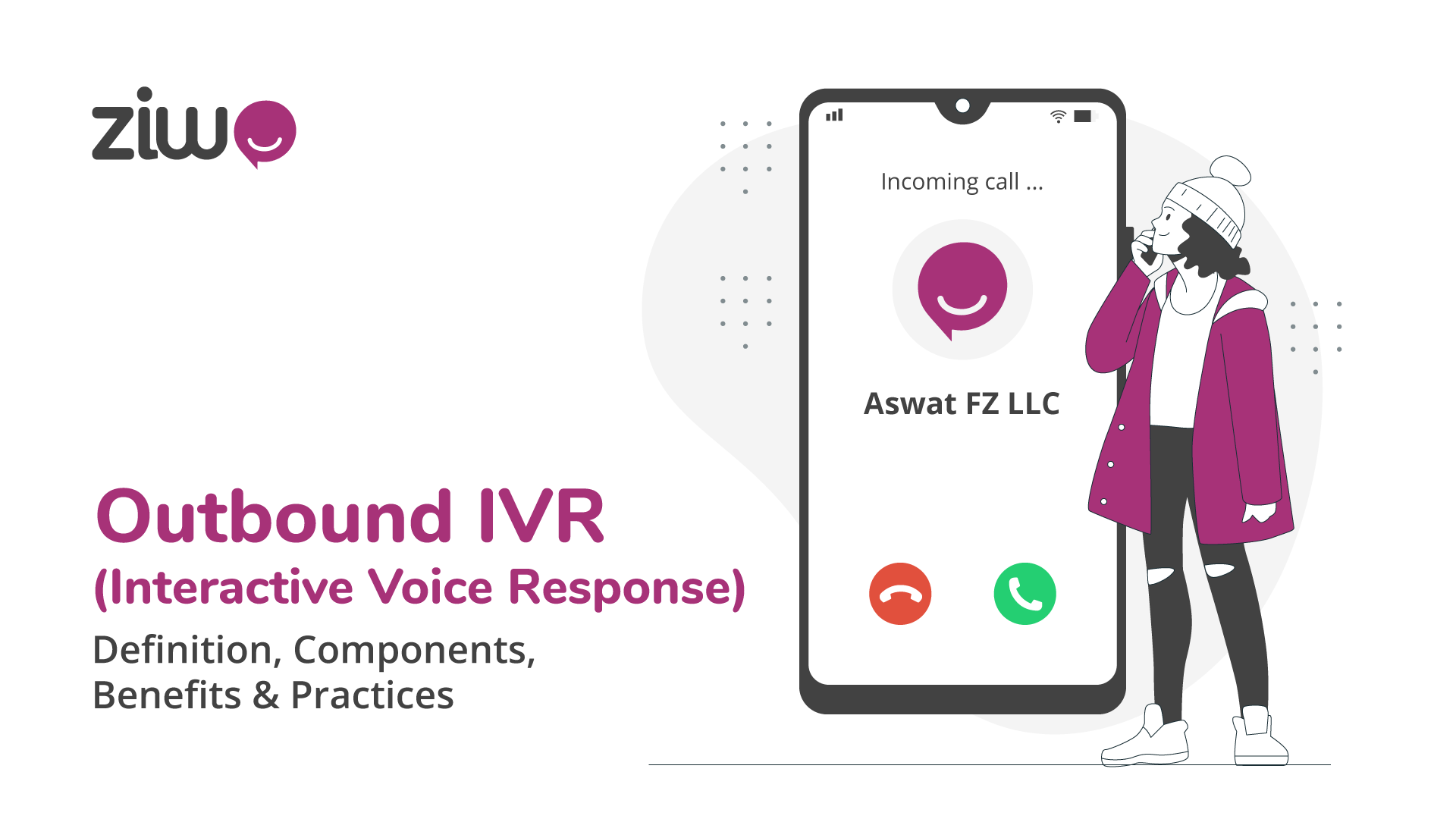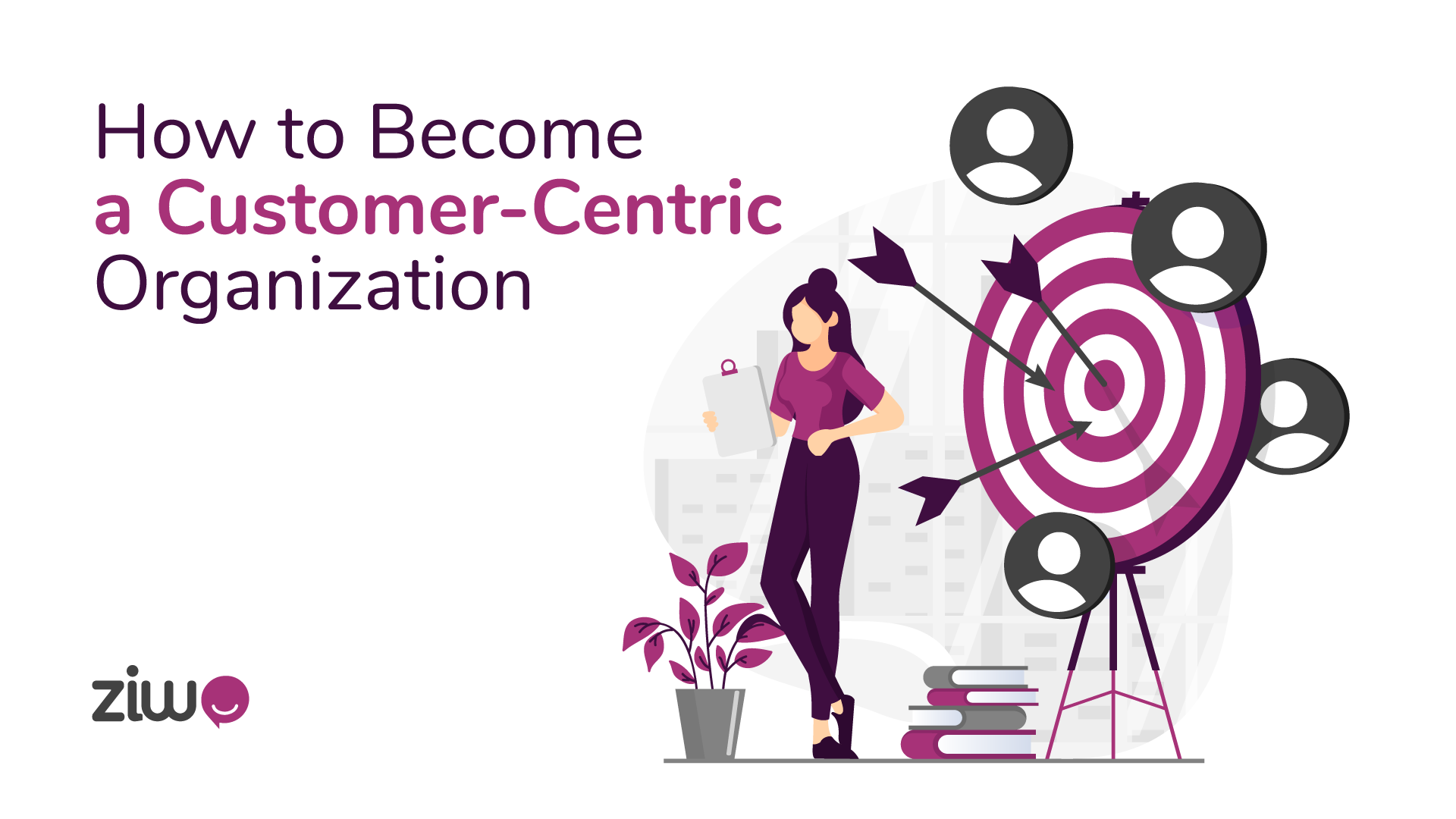
Comment le logiciel de centre d'appels VoIP améliore-t-il l'interaction avec les clients ?
Contrairement aux logiciels de centres d'appelsconventionnels , la VoIP permet de répondre plus rapidement aux clients en fournissant des routages d'appels intelligents, une interaction multicanal, en s'intégrant aux systèmes CRM, en offrant des enregistrements d'appels et des analyses, et en facilitant les systèmes IVR.
Ainsi, l'automatisation des centres d'appels simplifie les canaux de communication, garantit une approche centrée sur l'utilisateur et permet aux agents d'offrir des réponses sur mesure ainsi qu'un service client de haute qualité, ce qui se traduit par une plus grande fidélisation de la clientèle.
Introduction à la VoIP dans le service à la clientèle
La VoIP (Voice over Internet Protocol) a modifié la façon dont les organisations communiquent avec leurs clients et leur a permis de fournir des services de rappel moins chers et plus flexibles1. La VoIP est donc une technologie révolutionnaire dans le domaine du service à la clientèle.
Contrairement au scénario classique, où les clients doivent utiliser des téléphones fixes pour communiquer, les systèmes VoIP peuvent offrir aux clients professionnels une variété de canaux d'appel - communication vocale, appels vidéo et messagerie instantanée sur Internet.
Avec la mise en œuvre de la VoIP dans les services à la clientèle, l'efficacité et le degré d'individualisation des expériences des clients sont fortement améliorés, et les coûts opérationnels sont réduits, ce qui souligne pourquoi la VoIP est une solution de communication rentable pour les centres d'appels sur un pied d'égalité.
Améliorer la qualité de la communication avec la VoIP
La Voix sur IP est le principal moyen qui permet aux gens de communiquer entre eux avec une meilleure qualité grâce à un son plus clair, une utilisation efficace de la bande passante, la priorité du trafic vocal et l'absence d'échos en arrière-plan.
Ces fonctionnalités facilitent la mise en place d'un portail de communication exceptionnel où les interlocuteurs peuvent être soit des clients, soit des représentants de l'entreprise.
Qualité d'appel supérieure
La transmission numérique, l'optimisation de la bande passante et l'utilisation de méthodes modernes d'annulation de l'écho caractérisent les systèmes téléphoniques VOIP et leur confèrent une qualité d'appel exceptionnelle, inaccessible aux systèmes téléphoniques traditionnels.
Cela se traduit par un son de meilleure qualité et des communications plus fiables pour les appelants et les agents, ce qui garantit la meilleure expérience d'appel vocal pour toutes les parties.
Réduction des taux de perte d'appels
Nous constatons fréquemment une baisse des taux d'abandon des appels dans les systèmes de voix sur IP (VoIP) en raison de la tolérance aux pannes du réseau, des fonctions de qualité de service, de la gestion de la bande passante et de l'amélioration de la surveillance du réseau.
Ces fonctions sont coordonnées pour garantir que la communication n'est pas interrompue et que les perturbations éventuelles sont évitées pendant les appels.
VoIP et interaction avec le client
Avec la VoIP, la façon dont les clients interagissent avec l'entreprise se diversifie grâce à des modes de communication multicanaux, améliore les fonctionnalités d'accessibilité, permet la personnalisation, fournit des options avancées et soutient la croissance.
Ces avantages permettent au système d'être plus efficace et plus souple, et aux clients de vivre une bonne expérience.
Support multicanal
La VoIP est un outil efficace qui permet aux entreprises de communiquer avec leurs clients par le biais de nombreux canaux - appels vocaux/vidéo, chats, courriels et réseaux sociaux4. Les clients peuvent ainsi choisir le mode de communication qu'ils souhaitent, ce qui favorise le développement d'interactions personnalisées et la satisfaction des clients.
En outre, la plupart des plateformes VoIP centralisent ces canaux dans une interface unifiée, ce qui réduit le workflows des agents et les aide à gérer chaque communication en un seul endroit.
D'une manière générale, la fourniture d'une assistance transcanal par le biais de la VoIP va plus loin ; elle accroît l'accessibilité, améliore la flexibilité et rehausse la qualité de l'interaction.
Intégration avec les systèmes de gestion de la relation client (CRM)
L'intégration des systèmes de gestion de la relation client (CRM) permet aux agents des centres d'appels d'accéder immédiatement aux données pertinentes sur les clients, ce qui leur facilite le traitement personnalisé des situations3 et, mieux encore, la résolution proactive des problèmes.
Alors que les développements permettent aux entreprises de fusionner les processus de communication et de favoriser une meilleure efficacité, les interactions avec les clients deviennent le mot d'ordre.
Des fonctionnalités VoIP qui profitent au service à la clientèle
La capacité VoIP qui permet aux employés de naviguer dans le système d'acheminement des appels, de fournir une réponse vocale d'interaction, d'enregistrer les conversations, de transcrire les messages en texte, de surveiller les appels en un instant et d'intégrer le système de gestion de la relation client sont les divers avantages qui aident les représentants du service clientèle à se déplacer sans heurt pendant la prestation de services.
Faciliter l'utilisation de ces fonctionnalités permet d'améliorer les processus de communication, de prévenir les erreurs et de personnaliser les interactions de manière positive, améliorant ainsi la qualité du service à la clientèle.
Distribution automatisée des appels (ACD)
La distribution automatisée des appels (DAA) est l'activité la plus importante des systèmes VoIP 2. Elle attribue automatiquement les appels entrants aux agents ou départements les plus disponibles et les plus qualifiés en fonction des facteurs suivants : la disponibilité des agents, leurs compétences ou les préférences de l'appelant.
Ce but est atteint grâce à l'automatisation du processus de l'ACD qui met rapidement les appelants en contact avec l'agent approprié, réduisant ainsi le temps d'attente, augmentant la satisfaction du client et maximisant la productivité de l'agent.
C'est d'ailleurs pour cela que le système ACD est réputé, car il comprend des systèmes avancés de mise en file d'attente et de routage qui aident les entreprises à gérer efficacement un grand nombre d'appels et à offrir la meilleure expérience possible à leurs clients.
Systèmes de réponse vocale interactive (IVR)
Les systèmes de réponse vocale interactive (IVR), qui sont des programmes5 informatiques font partie des éléments distinctifs de la technologie VoIP. Ces programmes dirigent les appelants à travers des options de menu et des invites préenregistrées.
Les systèmes d'automatisation sont développés pour traiter les demandes initiales et augmenter la productivité en réduisant les longues files d'attente et le temps d'attente, améliorant ainsi la satisfaction des clients. Les systèmes IVR peuvent être personnalisés pour acheminer les appels vers le bon service ou le bon agent, ce qui réduit le temps passé à naviguer dans le labyrinthe des départements et permet finalement aux clients d'interagir avec le bon agent.
Analyses et rapports en temps réel
Les statistiques et les rapports sur l'heure des événements (TOE) dans les systèmes VoIP permettent aux entreprises de percevoir les comportements de leurs centres d'appels et de leurs clients en temps réel.
Ces outils aident à prendre des décisions proactives, par exemple en ce qui concerne le niveau des effectifs, ou à révéler des préférences de clients jusqu'alors inconnues, ce qui permettrait d'accroître la satisfaction6 de la clientèle.
Les rapports en temps réel permettent aux responsables de suivre leur personnel d'exploitation et d'offrir des évaluations sur place. D'une manière générale, ces caractéristiques permettent d'optimiser le processus commercial afin de servir les clients au mieux
le suivi des interactions avec les clients
La spécialisation dans l'analyse des systèmes VoIP est consacrée à leurs statistiques et à la facilitation de l'entreprise pour mesurer en conséquence et échanger des communications. Par conséquent, le canal sert à former une image complète du comportement, des goûts et de la satisfaction, ce qui permet de prendre des décisions fondées sur des preuves et d'améliorer les expériences.
Avec l'enregistrement des appels, la journalisation des appels, la surveillance des appels en direct et les tableaux de bord en direct, un système VoIP fournit à ses utilisateurs des outils qui leur permettent d'adapter la surveillance des interactions avec les clients aux besoins de leur entreprise.
Ces plateformes aident les entreprises à améliorer la qualité du service, à contrôler l'efficacité et, en fin de compte, à créer un environnement qui garantira le succès sur le marché grâce à l'expérience et à la fidélité des clients.
Prise de décision fondée sur les données
Pour que les clients obtiennent des informations permettant de prendre des décisions fondées sur des données dans les systèmes VoIP, les responsables doivent surveiller de près les données du centre d'appels et utiliser l'analyse pour prendre des décisions stratégiques importantes.
En étudiant les statistiques relatives aux volumes d'appels, aux temps d'attente, aux performances des agents et aux taux de satisfaction des clients, les entreprises peuvent mettre en évidence des tendances et des modèles et se rendre compte si les choses sont optimales ou non.
Cette connectivité dans l'entreprise, qui permet de prendre des décisions conscientes et calculées, est un moteur qui fait progresser l'entreprise vers une plus grande efficacité, une meilleure qualité de service et, enfin, de meilleurs résultats.
Surmonter les défis de la mise en œuvre de la VoIP
La présence d'obstacles courants lors de la mise en œuvre de la VoIP nécessite un diagnostic approprié de l'instabilité du réseau, des problèmes de sécurité et de la compatibilité avec l'infrastructure existante. Les entreprises peuvent faire face à ces problèmes en utilisant la structure du réseau, les protocoles de sécurité installés et, bien sûr, en choisissant des solutions d'intégration particulières.
En outre, les employés devraient bénéficier d'une formation et d'un soutien complets pendant la transition vers la VoIP, ce qui devrait atténuer les problèmes d'anxiété tout au long du processus.
En étant résolues et en devenant proactives, les organisations peuvent déployer la technologie VoIP avec succès et atteindre les objectifs d'amélioration de la connectivité, de l'efficacité et de la productivité.
Assurer une connectivité internet fiable
La création d'une connectivité internet résiliente est la condition la plus élémentaire pour le fonctionnement des technologies VoIP. Pour rendre l'entreprise résistante aux menaces de cybersécurité, les entreprises peuvent avoir besoin d'utiliser d'autres connexions internet, de mettre en place des mesures de qualité de service (QoS) efficaces et de suivre les performances du réseau au quotidien.
Le fait que les solutions de communication de secours se présentent sous la forme de points d'accès mobiles constitue une assurance en cas de panne d'internet. Grâce à ces actions positives, l'environnement est rendu gérable et ininterrompu pour une communication VoIP totalement indépendante.
Mesures de sécurité pour les données des clients
La mise en œuvre d'une politique de sécurité peu coûteuse mais très efficace pour les données des clients dans les systèmes VoIP est d'une importance cruciale.
Cela nécessite l'application de mesures telles que le cryptage des données vocales, la restriction de l'accès à certaines informations, le renforcement de la sécurité de l'infrastructure du réseau, la sauvegarde des données et la formation continue des employés.
En mettant en œuvre ces mesures de sécurité, une entreprise peut protéger les informations de ses clients et maintenir un niveau élevé de confiance dans ses systèmes VoIP.
Tendances futures : VoIP et interaction avec les clients
Les tendances émergentes en matière d'interaction client VoIP se caractérisent par des possibilités telles que la diversification des canaux de communication, la personnalisation et l'intégration aux tendances actuelles. Certaines entreprises pourraient aller de l'avant et intégrer des assistants virtuels dotés d'IA dans une application ou un site web afin de fournir une assistance pratique ou personnalisée en temps réel.
En complément, le système de VoIP peut se transformer en une fonctionnalité de communication omnicanale, facilitant la transition sur différentes plateformes sans défaut.
L'analyse avancée permet également de tenir compte du comportement des clients, ce qui contribue à l'élaboration d'un meilleur service. Les fonctionnalités de sécurité améliorées seront au cœur des préoccupations, telles que l'authentification biométrique et le cryptage, ainsi que d'autres formes de protection des données.
Avec la mise en œuvre de dispositifs IdO, les possibilités de communication seront encore élargies. En résumé, ces tendances impliquent que les activités de relations avec les clients, qui permettent d'économiser de la main-d'œuvre, sont adaptées et sécurisées, bénéficient d'une nouvelle vitalité grâce à la VoIP.
Technologies émergentes dans le domaine de la VoIP
Les percées scientifiques dans le domaine de la téléphonie sur Internet, telles que WebRTC, les réseaux 5G, l'inclusion de l'intelligence artificielle (IA), l'intégration de l'Internet des objets (IoT) et la blockchain deviennent le moteur de la croissance des systèmes de communication vocale.
La liste est bien plus longue et promet aux utilisateurs plus de polyvalence, de sécurité et d'individualité.
Prédictions pour les innovations en matière de service à la clientèle
L'IA sera intégrée au système, créant ainsi des interactions adaptées aux besoins personnels du client.
Les chatbots deviendront de plus en plus populaires pour une assistance client instantanée, le canal de communication avec les clients sera optimisé et l'analyse des données contribuera à une prestation de service proactive. Ajoutez à cela la technologie vocale, la réalité augmentée et la réalité virtuelle, et cette révolution améliorera les interactions avec les clients.
Dans l'ensemble, les entreprises utiliseront la technologie pour optimiser et individualiser la communication avec les clients.
Références bibliographiques
1 - Technologies VoIP et interaction avec les clients :
¹ Middleton, C., & Longford, G. (2016). L'internet et les télécommunications : The Transformation of Voice Services. MIT Press.
² Hall, J. A., & Hossler, M. (2018). Managing Call Centers : Le rôle des logiciels dans l'amélioration de l'efficacité opérationnelle. Wiley.
2 - Communication multicanal et intégration de la gestion de la relation client :
³ Payne, A., & Frow, P. (2005). A Strategic Framework for Customer Relationship Management (Cadre stratégique pour la gestion des relations avec les clients). Journal of Marketing, 69(4), 167-176.
⁴ Stone, M. (2014). L'expérience client omnicanale : Intégrer les canaux numériques et physiques. Journal of Direct, Data and Digital Marketing Practice, 15(4), 297-310.
3 - Systèmes automatisés de distribution d'appels et IVR :
⁵ Levin, D. (2017). Les systèmes IVR dans les centres d'appels modernes : Automatisation et expérience client. McGraw-Hill.
⁶ Dixon, M., & Toman, N. (2013). The Effortless Experience : Conquérir le nouveau champ de bataille de la fidélisation des clients. Portfolio.






